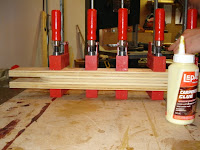
I had been served several atrocious home-brews in the past, my uncles being the worst. They were often overly sweet, under-carbonated and served in plastic pop bottles. My initial desire to make my own booze came during a slow time at work, when shifts were scarce and my bank account was taking a nose dive. Not wanting to give up one of my favourite pastimes, I started looking into making an inebriant. My first idea was moonshine. After a little research, I decided I wanted to avoid going blind, and keep my apartment unexploded. The next liquor I looked into was alcoholic cider. The process was very easy: make an apple cider, add yeast, and then wait - but the final product was very dry and bland. After having this boring beverage, I figured beer might be more interesting, both to drink and make. I was also spurred on by having drank the first palatable home-brew I've ever had, from my friend Johnny Deshman. Realizing it was possible to make my favourite beverage at home, for next to no money, I began my first brew.
The first beer I brewed was a traditional American brown ale. I brewed it using ten dollars of equipment bought from a wine making store at Ossington and Queen, and picked up the ingredients from Fermentations on Danforth. I wanted to avoid those ugly plastic bottles that are sold by brewing stores, so I started a drinking competition with Dave and Jacob to drink as many swing top bottles of beer as possible. I will never drink another Grolsch again.
The brewing process itself was pretty nerve-wracking; my only instructions were from a 2 page article out of Mother Earth News, and early on in the boiling of the malt, I experienced a flash boil. This is where the sugary syrup from the malt "jumps" once it reaches the boiling point, spilling over and creating an incredibly sticky mess. Difficulties aside, the end product was impressive. All of the taste-testers were overwhelmingly positive, and even I was surprised by the quality of the beer.

I hope the success of my first beer wasn't beginners luck, and I'll know in about a month, when my second brewing project, a coffee porter, is ready to drink. The one complaint I had about my first beer was that it needed more hops. Loving a disturbingly hoppy beer Jacob, Dave and I decided to brew the hoppiest beer known to man, an IPA. To give it a twist, I decided to do an IRA, India Red Ale, by adding a healthy dose of munich malt, which will give a distinctive red tint and a caramelly flavour. By this, my third, attempt I had mastered the brewing process. The entire house, and probably street, stank like a brewery in no time. The IRA is now fermenting in our broom closet, which manages to contain most of the smell. It'll be ready to bottle in a month, and ready to drink in a further two months.
The brewing process itself was pretty nerve-wracking; my only instructions were from a 2 page article out of Mother Earth News, and early on in the boiling of the malt, I experienced a flash boil. This is where the sugary syrup from the malt "jumps" once it reaches the boiling point, spilling over and creating an incredibly sticky mess. Difficulties aside, the end product was impressive. All of the taste-testers were overwhelmingly positive, and even I was surprised by the quality of the beer.

I hope the success of my first beer wasn't beginners luck, and I'll know in about a month, when my second brewing project, a coffee porter, is ready to drink. The one complaint I had about my first beer was that it needed more hops. Loving a disturbingly hoppy beer Jacob, Dave and I decided to brew the hoppiest beer known to man, an IPA. To give it a twist, I decided to do an IRA, India Red Ale, by adding a healthy dose of munich malt, which will give a distinctive red tint and a caramelly flavour. By this, my third, attempt I had mastered the brewing process. The entire house, and probably street, stank like a brewery in no time. The IRA is now fermenting in our broom closet, which manages to contain most of the smell. It'll be ready to bottle in a month, and ready to drink in a further two months.

 n the season, the end of May, well after the optimal time for sowing seeds. In order to make sure we had some production we planted with haste and with little planning. As Franka, our next door nonna, quickly made us aware we planted much of our veg to close together. We also didn't do any companion planting, or plant with garden cycles in mind.
n the season, the end of May, well after the optimal time for sowing seeds. In order to make sure we had some production we planted with haste and with little planning. As Franka, our next door nonna, quickly made us aware we planted much of our veg to close together. We also didn't do any companion planting, or plant with garden cycles in mind.






 e cheese when they toppled over in the middle of the night.
e cheese when they toppled over in the middle of the night.

